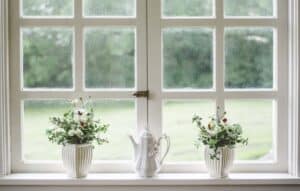AD | Featured
In life, mistakes are bound to happen. When these mistakes take the form of hardwood flooring installation faux pas and mess-ups, it’s natural to feel frustrated and overwhelmed. Unfortunately, inexperienced technicians can make costly installation mistakes.
This is especially true when working with high-quality materials like hardwood. Hardwood is one of the most popular flooring materials used nowadays. There are different types of hardwood for wooden floors, such as oak, beech, and walnut. It is one of the most durable and easy-to-clean flooring materials. However, it’s also one of the most expensive ones.
That said, If you’re looking forward to a smooth and flawless hardwood flooring installation, you may want to familiarize yourself with the most common installation mistakes.
In this article, we’ll discuss the most prevalent hardwood flooring installation errors and how to either avoid them or fix them. With this information, you can help ensure that your home’s new hardwood flooring is perfectly positioned and settled.
- Hardwood Flooring Installation Mistakes
- Mistake 1: Leaving Wide Gaps Between Boards
- Mistake 2: Failing to Prepare Your Sub-Flooring
- Mistake 3: Letting Materials Absorb Moisture
- Mistake 4: Not Planning the Layout for Flooring
- Mistake 5: Using Too Many Nails
- Mistake 6: Not Treating Stains Early
- Mistake 7: Overusing the Sander
- Mistake 8: Trying to Do It All Without Help
- Enjoy Your Hardwood Flooring the Right Way
Hardwood Flooring Installation Mistakes
Recognizing the most common hardwood flooring installation mistakes can help you avoid making them yourself. After all, you may never realize that you’re doing something incorrectly if you’ve never been shown the right way.
However, every problem has a solution. Even the gravest and most complicated errors in judgment can result in a powerful learning moment or life lesson. Consequently, it’s crucial to be unafraid to make mistakes while learning a skill.
Still, knowing what to expect before starting an installation project can be immensely helpful. A correctly installed hardwood floor will result in minimal wasted materials and few excess costs.

Mistake 1: Leaving Wide Gaps Between Boards
A hardwood floor should be a thing of elegance and opulence. But when there are several inches of space between each board, that luxurious aesthetic flies right out the window. Wide gaps between boards can be unsightly and risky.
A toe could easily catch onto the ledge of one of these gaps. If you happened to fall onto a hardwood floor, you could come away with some serious injuries. Hardwood is typically very rigid and impact resistant. It does not absorb pressure as carpet does.
Also, wide gaps could help liquid find its way into the nooks and crannies of your flooring. Over time, this could lead to warping, buckling, or molding.
Solution: Practice Your Racking Skills
Large gaps between boards tend to occur after a poor racking job. To properly rack your flooring, you’ll need to open multiple packages of boards and begin lying them on your prepped sub-flooring.
Before adhering them to anything, you should take extra time to work on their arrangement. Ensuring that you’re filling your space with boards of multiple hues and tones can help flooring retain its elegant appeal.
You’ll also want to incorporate flooring pieces of multiple sizes. This practice helps diminish or eliminate the presence of board gaps. Besides, you’ll end up with less material waste when your hardwood flooring installation is complete.
Mistake 2: Failing to Prepare Your Sub-Flooring
Beneath every carpet, linoleum, or real wood flooring lies a sub-flooring. In most homes, this sub-flooring is comprised of concrete and not much else. There may be some padding or cushioning between boards and sub-flooring, but that’s about it.
When you ripped up your previous flooring, did you remove this old padding? Did you sweep the sub-flooring and ensure that it was free of debris? And lastly, did you replace that tired cushioning?
If the answer to any or all of these questions was no, you could expect to deal with creaking boards that quickly buckle and bend.
Solution: Prepare Your Sub-Flooring
Always remove the previous flooring entirely before moving on to installation. This means removing the flooring material, any excess debris, and used sub-flooring padding.
If your sub-flooring is concrete, you can safely use a variety of chemicals to get rid of stains, clumps, or unsightly messes. A happy hardwood flooring installation always starts with a clean slate. Or, in this case, clean concrete.

Mistake 3: Letting Materials Absorb Moisture
While you may think that your hardwood boards are safe from water damage while they’re in your home, you may need to think again. High levels of interior humidity can contribute to early warping and damage.
Solution: Check Your Home’s Humidity Levels
You can use a handheld humidity monitoring device to consistently check your home’s moisture levels. If levels are too high, you may need to rent or purchase a dehumidifier. Be sure to store boards away from basements and attics.
If possible, you may also try to keep your hardwood materials off of stone or concrete flooring.
Mistake 4: Not Planning the Layout for Flooring
Maybe you didn’t want to spend several hours racking your board before securing them together. Maybe you didn’t measure your room correctly. Whatever the case may be, you now have a floor that looks like it was designed by a lazy lumberjack.
Poor layout planning can result in uneven edges, unfinished portions of the floor, or buckling issues. When there are open gaps in a hardwood floor, there are plenty of opportunities for mischief, mayhem, and moisture to creep in.
If you don’t rack your boards and plan your layout, you may quickly find yourself spending an extra evening pulling up hardwood flooring. Anyone who has ever installed laminate flooring may be familiar with this frustrating turn of events.
Solution: Spend Time Creating an In-Depth Layout Plan
The only way to fix a poor layout is to rip it apart and try again. You can save yourself hours of frustration and a good deal of money by spending plenty of time on your layout plan before starting the racking process.
If your home has lots of small, tight corners or angled walls, it is especially crucial to plan your layout. Otherwise, you may end up with a floor that is missing a few chunks here and there.

Mistake 5: Using Too Many Nails
So you decided to use several nails on each board when securing them. And now you’ve noticed cracks that seem to start at the nails and extend down into the body and length of the boards. Sadly, you’ve committed a relatively rare mistake.
While many hardwood flooring installation technicians may use as few nails as possible (which can result in loose or haphazard flooring), far fewer are guilty of over-nailing. Still, both errors can have long-lasting, negative results.
Solution: Use Fewer Nails or Repair Cracks With Filler
It might be tricky to determine the perfect ratio of nails to use, especially if you’ve never installed hardwood flooring before. Also, some types of boards may be more prone to developing cracks and fractures.
Using a wood filler or board repair kit can help you hide the appearance of cracks and improve the overall security of your flooring.
Mistake 6: Not Treating Stains Early
Unfinished wood can be a stain magnet. Any liquid or pigmented substance that comes into contact with untreated or unfinished lumber is bound to leave an indelible mark. If these stains are treated and removed quickly, they may be gone for good.
However, many installation technicians and DIY enthusiasts make the mistake of leaving stains to settle into hardwood boards. The result is brand-new flooring that looks like it hasn’t been cleaned in decades.
Solution: Clean Stains Immediately
Don’t use harsh cleaning chemicals to clean stains from wooden surfaces. Do, however, apply mineral oil to stains immediately after they appear. Mineral oil can act as a microscopic lubricant and help lift dirt and debris from a board’s upper layer.
Always use a clean, fresh cloth to polish the oil into the wood. The cloth will help pick up the stain and the mineral oil will help protect and brighten the board.
If you’re working with engineered options, you may want to spend a little time learning how to clean engineered hardwood flooring. Doing so can help extend the life of your flooring.

Mistake 7: Overusing the Sander
Using raw or recycled hardwood boards can be an excellent way to diminish your negative environmental impact. However, used boards may require some refurbishment and a new finish. This process typically requires a sander.
If you’re not careful with your sander, you can easily plough through a board’s softwood and distort its appearance. This issue isn’t easily fixable, though it is entirely preventable.
Solution: Use a Light Touch or a Low-Grade Abrasion Pad
Using a light touch while sanding can help you avoid over-sanding your boards. You could also choose to use a low-grade abrasive paper or pad that is very fine. Coarser abrasive surfaces may remove too much of the wood.
Mistake 8: Trying to Do It All Without Help
A hardwood flooring installation project can be an exceptionally challenging task if you’ve never installed flooring before. You’ll need plenty of tools to get the job done, and this can be costly if you don’t already own many home improvement tools.
Should you catch yourself feeling overwhelmed by the idea of trying to get the entire installation done on your own, it may be time to change your plans. It’s better to spend a little more than to end up in tears while trying to re-rack a massive floor.
Solution: Hire a Reputable Installation Technician
If you’re feeling overwhelmed about completing a DIY hardwood flooring installation, then you may want to consider contacting an installation company or technician for assistance.
While you may end up spending a little more on an installation service, you could save hundreds of dollars that would have gone toward tools and materials. When in doubt, don’t be afraid to reach out. Professional flooring technicians can help.

Enjoy Your Hardwood Flooring the Right Way
It can be a struggle to enjoy a hardwood floor that is uneven, poorly positioned, or warped by moisture. A low-quality hardwood flooring installation can cost hundreds of dollars in materials and labor and leave you with disappointing, lackluster flooring.
By avoiding the above mistakes (or quickly moving toward a solution), you can enjoy your new hardwood floors the way you were meant to. Rather than stressing out about hiring a new contractor or hardwood flooring installation technician, you can rest and relax.
If you enjoyed this article, then be sure to check out our related home and garden articles now!































No Comments